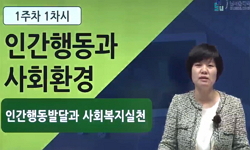연구목적: 두부 표면에서 유도시킨 국소 자기장 파동을 이용하여 두뇌 피질을 자극할 수 있도록 하는 새로운 비침습적 시술 방법인 경두개 자기 자극(Transcranial Magnetic Stimulation: 이하 TMS)은 ...
http://chineseinput.net/에서 pinyin(병음)방식으로 중국어를 변환할 수 있습니다.
변환된 중국어를 복사하여 사용하시면 됩니다.
- 中文 을 입력하시려면 zhongwen을 입력하시고 space를누르시면됩니다.
- 北京 을 입력하시려면 beijing을 입력하시고 space를 누르시면 됩니다.
경두개 자기 자극(Transcranial Magnetic Stimulation)의 신경정신과적 응용 = Transcranial Magnetic Stimulation in Neuropsychiatry
한글로보기https://www.riss.kr/link?id=A3009059
- 저자
- 발행기관
- 학술지명
- 권호사항
-
발행연도
2001
-
작성언어
Korean
- 주제어
-
KDC
513.85
-
자료형태
학술저널
- 발행기관 URL
-
수록면
3-11(9쪽)
-
KCI 피인용횟수
3
- 제공처
-
0
상세조회 -
0
다운로드
부가정보
국문 초록 (Abstract)
두부 표면에서 유도시킨 국소 자기장 파동을 이용하여 두뇌 피질을 자극할 수 있도록 하는 새로운 비침습적 시술 방법인 경두개 자기 자극(Transcranial Magnetic Stimulation: 이하 TMS)은 중추 및 말초 신경계의 전도도, 시가 정보 처리, 언어, 기억, 감정 및 운동 등 다양한 두뇌 기능을 국재화하는 데에 널리 사용되고 있으며 특히 두뇌 피질을 국소적으로 자극할 수 있다는 특징으로 인해 여러 신경정신과적 질환의 새로운 치료 방법으로도 이용될 수 있다는 가능성이 대두되고 있다. 본 논문은 TMS의 발달과정, 기전 및 신경정신과적 응용에 대한 광범위한 문헌 검색과 정리를 통하여 그 현황과 미래를 개괄하려는 목적으로 작성되었다.
방법:
현재까지 출간된 영어로 작성된 논문을 검색하여 정리하였으며 TMS를 실제 시행한 경험이 풍부한 전문가들과 논의를 하였다
결과:
TMS는 신경정신과적 질환의 행동적 신경심리를 이해하고 두뇌의 병태생리적 회로를 조사하는데에 중요한 도구가 될 것이며 우울증을 비롯한 신경정신과적 질환의 새로운 치료방법이 될 수 있는 가능성이충분하다.
결론:
두되-행동간의 관계를 연구하는 데에 TMS가 매우 유용할 것이며 TMS의 효능과 안정성을 확고하게하는 다양한 향후 연구가 지속적으로 필요할 것이다.
연구목적:
두부 표면에서 유도시킨 국소 자기장 파동을 이용하여 두뇌 피질을 자극할 수 있도록 하는 새로운 비침습적 시술 방법인 경두개 자기 자극(Transcranial Magnetic Stimulation: 이하 TMS)은 중추 및 말초 신경계의 전도도, 시가 정보 처리, 언어, 기억, 감정 및 운동 등 다양한 두뇌 기능을 국재화하는 데에 널리 사용되고 있으며 특히 두뇌 피질을 국소적으로 자극할 수 있다는 특징으로 인해 여러 신경정신과적 질환의 새로운 치료 방법으로도 이용될 수 있다는 가능성이 대두되고 있다. 본 논문은 TMS의 발달과정, 기전 및 신경정신과적 응용에 대한 광범위한 문헌 검색과 정리를 통하여 그 현황과 미래를 개괄하려는 목적으로 작성되었다.
방법:
현재까지 출간된 영어로 작성된 논문을 검색하여 정리하였으며 TMS를 실제 시행한 경험이 풍부한 전문가들과 논의를 하였다
결과:
TMS는 신경정신과적 질환의 행동적 신경심리를 이해하고 두뇌의 병태생리적 회로를 조사하는데에 중요한 도구가 될 것이며 우울증을 비롯한 신경정신과적 질환의 새로운 치료방법이 될 수 있는 가능성이충분하다.
결론:
두되-행동간의 관계를 연구하는 데에 TMS가 매우 유용할 것이며 TMS의 효능과 안정성을 확고하게하는 다양한 향후 연구가 지속적으로 필요할 것이다.
다국어 초록 (Multilingual Abstract)
Methods : We described the history, procedures, basic researches, clinical applications, safety issues, mode of action, and future of TMS using literature review and interview with experts.
Results : The earlier clinical uses of TMS had been restricted to the field of neurology where it was used to examine the central and peripheral nervous conduction. However this technology has been widely used to map various brain functions such as visual information processing, language, memory, emotion, and movement. The ability to excite local areas of brain cortex has raised the possibility of the use of TMS as a novel therapeutic tool for various psychiatric disorders.
Conclusion : TMS is a relatively new and noninvasive method to investigate regional brain activity and to treat several psychiatric diseases. Further work is necessary to firmly establish the efficacy and safety of this promising tool.
Objectives : Transcranial magnetic stimulation(TMS) is a new, noninvasive procedure of a localized pulsed magnetic field to the surface of the head to cause a depolarization of neurons in the brain cortex underneath. The magnetic field(Magnetic) is ge...
Objectives : Transcranial magnetic stimulation(TMS) is a new, noninvasive procedure of a localized pulsed magnetic field to the surface of the head to cause a depolarization of neurons in the brain cortex underneath. The magnetic field(Magnetic) is generated by passing current pulses by conducting coil, held close to the scalp so that the field is passing the skull (Transcranial) and is focused in the cortex(Stimulation). Here we provide a summarized review of the methodology of TMS and its application to research and therapeutics in the field of neuropsychiatry.
Methods : We described the history, procedures, basic researches, clinical applications, safety issues, mode of action, and future of TMS using literature review and interview with experts.
Results : The earlier clinical uses of TMS had been restricted to the field of neurology where it was used to examine the central and peripheral nervous conduction. However this technology has been widely used to map various brain functions such as visual information processing, language, memory, emotion, and movement. The ability to excite local areas of brain cortex has raised the possibility of the use of TMS as a novel therapeutic tool for various psychiatric disorders.
Conclusion : TMS is a relatively new and noninvasive method to investigate regional brain activity and to treat several psychiatric diseases. Further work is necessary to firmly establish the efficacy and safety of this promising tool.
목차 (Table of Contents)
- 서론
- 역사 및 시술 방법
- 기초적 응용
- 임상적 응용
- 안전성
- 서론
- 역사 및 시술 방법
- 기초적 응용
- 임상적 응용
- 안전성
- 작용기전
- TMS의 미래
- 결론
- 참고문헌
동일학술지(권/호) 다른 논문
-
음주문제 수용인식에 따른 자기보고식 평가 척도(AUI 및 MAST)에서의 패턴 및 유형 분류와의 관련
- 대한신경정신의학회
- 이명주
- 2001
-
- 대한신경정신의학회
- 이후경
- 2001
-
- 대한신경정신의학회
- 김붕년
- 2001
-
- 대한신경정신의학회
- 정영철
- 2001
분석정보
인용정보 인용지수 설명보기
학술지 이력
| 연월일 | 이력구분 | 이력상세 | 등재구분 |
|---|---|---|---|
| 2023 | 평가예정 | 재인증평가 신청대상 (재인증) | |
| 2020-01-01 | 평가 | 등재학술지 선정 (재인증) |  |
| 2018-01-01 | 평가 | 등재후보학술지 선정 (신규평가) |  |
| 2016-12-01 | 평가 | 등재후보 탈락 (계속평가) | |
| 2015-12-01 | 평가 | 등재후보로 하락 (기타) |  |
| 2011-01-01 | 평가 | 등재학술지 유지 (등재유지) |  |
| 2009-01-01 | 평가 | 등재학술지 유지 (등재유지) |  |
| 2006-01-01 | 평가 | 등재학술지 선정 (등재후보2차) |  |
| 2005-01-01 | 평가 | 등재후보 1차 PASS (등재후보1차) |  |
| 2003-01-01 | 평가 | 등재후보학술지 선정 (신규평가) |  |




 RISS
RISS 스콜라
스콜라






